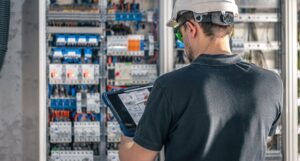You’ve probably had the experience of driving down the highway on a summer day and seeing a car parked on the shoulder with steam blasting from under its hood. For whatever reason — leaky radiator, blown hose, broken belt — the car’s engine overheated.
Computer servers don’t have hoses and belts, but they do produce heat, which must be dissipated to a specified range. An overheated server can fail — with potentially disastrous consequences.
An entire data center full of servers and other IT equipment requires industrial-strength, efficient cooling. Today, we tend to group the different design options into two groups — perimeter cooling and close-coupled cooling. Perimeter cooling has been around for decades and still functions very well in certain circumstances. As rack power density has increased, the effectiveness of perimeter cooling has met its limits.
The cooling manufacturing industry’s answer to the problem has been close-coupled cooling, which refers to the art of extracting the heat very close to the source of that heat. Close-coupled cooling systems may be found in-row, overhead, or in-rack. These systems improve a data center’s cooling efficiency, in part, by preventing unwanted mixing of cool supply (server inlet) air and warm return (server exhaust) air.
Moreover, close-coupled devices typically require a much smaller footprint for the same sensible capacity. That enhances space utilization and minimizes overall floor space requirements.
Some of the perimeter cooling manufacturers have been slow to respond to new trends and requirements. While perimeter cooling might be sufficient for low-density installations, high-density data centers (average >10 kW per rack) require close-coupled cooling.
Only a qualified specialist should be trusted to determine the appropriate cooling strategies for your data center.










